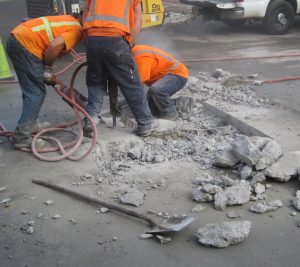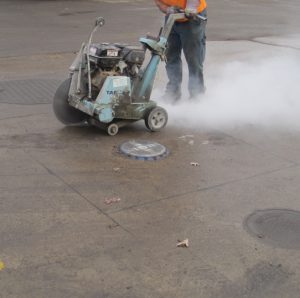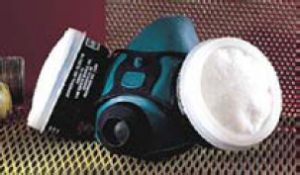OSHA Interpretation on silica standard for Construction
Last March, OSHA released an interpretation letter regarding some aspects of its construction silica standard (“CSS” or “Standard”) 29 CFR 1926.1153. In particular they replied to an inquiry letter on the following topics:
- Integrated Water Delivery System,
- Exposure Assessment,
- Medical Surveillance, and
- Respiratory Protection
Integrated Water Delivery System.
Fully and properly implementing the engineering controls, work practices, and respiratory protection specified for certain construction task(s)/activity(ies) listed on Table 1 of the CSS, is the first choice for the employer to comply with the Standard (assessing and limiting the exposure to silica is the alternative – see paragraph 2 below).
OSHA clarified that the “integrated water delivery system” specified in different tasks in Table 1
“..must be designed, developed, and supplied by the manufacturer specifically for the tool in use, and must be operated and maintained in accordance with the manufacturer’s instructions related to minimizing dust emissions” and “a water delivery system designed by the employer …” or “…an independent pressurized water sprayer operated by a second employee..” “…will not meet the requirements of Table 1…”.
Exposure Assessment.
A water delivery system designed by the employer can still be used to limit the exposure to silica but the employer must then choose to follow the “exposure assessment” path to show compliance with the Standard. In this case employer must assess exposure to silica with either one of the following options:
- Performance option. Using a combination of air monitoring data or objective data sufficient to accurately characterize employee exposures, or
- Scheduled monitoring option, on the basis of one or more personal breathing zone air samples that reflect the exposures of employees on each shift, for each job classification, in each work area.
In their interpretation letter OSHA also clarified that the assessment is deemed completed when either the employer has characterized an employee’s 8-hour time-weighted average (TWA) exposure in the “performance option” or when monitoring results are received by the employer from the laboratory in the “scheduled monitoring option”
Medical Survaillance.
Medical surveillance must be available to each employee who will be required under the Standard to use a respirator for 30 or more days per year. OSHA clarified the following:
- A day in which a respirator is only worn because it is required by the employer (but not by the Standard) does not count toward the 30-day threshold for medical surveillance;
- The requirement for employers is to provide medical surveillance to employees who “will be” required to use a respirator under the Standard for 30 or more days per year. Therefore, eligibility for medical examinations is based on expected days of respirator use. Employers must make a reasonable estimate of the number of days that each employee will be required to wear a respirator and offer medical examinations to those employees expected to wear respirators for 30 or more days in a twelve-month period. This is because the medical surveillance needs an initial examination which will set a baseline medical evaluation based on past (and present) employee’s work, medical and personal history.
Respiratory protection.
Finally in their interpretation letter, OSHA provides clarification on the daily amount of time that counts towards the 30 days threshold (in a year) for medical surveillance. OSHA clarifies that any daily usage of the respirator required by the Standard, counts as 1 day towards the 30 days limit, whether a respirator will be used for 10 minutes a day or 14 hours a day.
To know more about the other requirements set by the OSHA Silica Standard for Construction (29 CFR 1926.1153) or General Industry (29 CFR 1910.1053) please visit our previous blog or contact Walden Environmental Engineering at 516-624-7200 for a free consultation to discuss any issue about the OSHA silica standards or about any of the other EHS engineering services we provide.



